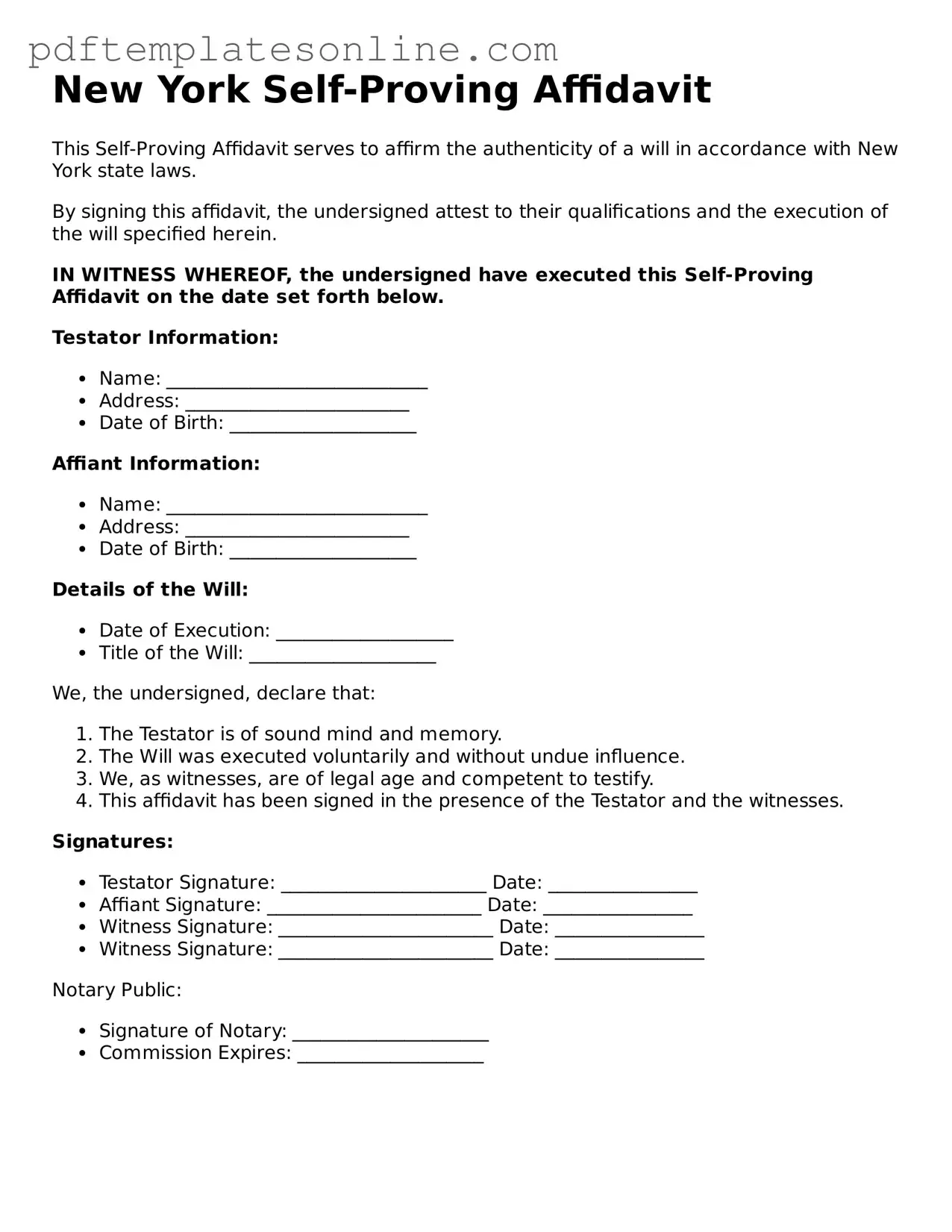Official New York Self-Proving Affidavit Document
The New York Self-Proving Affidavit is a legal document that allows a testator's will to be validated without the need for witnesses to testify in court. This form simplifies the probate process by providing evidence that the will was executed properly. By using this affidavit, individuals can help ensure that their final wishes are honored efficiently.
Access Self-Proving Affidavit Editor Now
